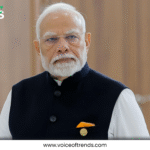In a significant step toward de-escalation, Pakistan and India have agreed to withdraw their troop reinforcements from their shared border, including the Line of Control (LoC) in Kashmir, by May 30, 2025. This decision follows a period of heightened tensions and military clashes that brought the two nuclear-armed neighbors close to the brink of all-out conflict. The mutual understanding, reached through marathon meetings between senior military officials, signals a fragile but hopeful move toward restoring calm in a region long plagued by strife.
Table of Contents
ToggleA Fragile Ceasefire Sets the Stage
The agreement comes on the heels of a ceasefire brokered on May 10, 2025, which halted four days of intense cross-border hostilities involving drones, missiles, and artillery exchanges. The conflict was sparked by a deadly attack on April 22, 2025, in Pahalgam, Jammu and Kashmir, where 26 civilians, mostly tourists, were killed. India accused Pakistan of supporting the attackers, a claim Pakistan denied, leading to India’s retaliatory Operation Sindoor on May 7. The operation targeted alleged terrorist bases in Pakistan-administered Kashmir, escalating tensions as Pakistan responded with drone and artillery strikes on Indian border positions.
The ceasefire, initially fragile, has held since May 10, with both sides committing to avoid further hostile actions. On May 12, the Directors General of Military Operations (DGMOs) from both countries held a 45-minute hotline discussion, reaffirming their commitment to de-escalation and laying the groundwork for troop withdrawal. The Indian Army clarified that no further DGMO talks were scheduled for May 18 and emphasized that the ceasefire agreement has no expiry date, underscoring a shared intent to maintain peace.
Phased Withdrawal to Peacetime Positions
According to senior Pakistani security officials, the withdrawal will occur in two phases, with both nations agreeing to reposition their armed forces to peacetime deployments along the LoC and the International Border by May 30. The LoC, a 740km de facto frontier dividing Kashmir, has been a flashpoint for decades, heavily militarized by both sides. The decision to scale back troop reinforcements is a critical confidence-building measure, aimed at reducing the risk of further escalation in a region that has seen multiple wars and Clashes have occurred between India and Pakistan since their separation in 1947.
The agreement also includes the resumption of the iconic Wagah-Attari border ceremony, a daily military display at the Punjab land border that symbolizes the rivalry between the two nations. India announced that the ceremony, a popular tourist attraction, would reopen to the public on May 21, 2025, while Pakistan claimed it had never halted the event. This symbolic gesture reflects a tentative step toward normalcy, though underlying tensions remain.
The Human Cost of Recent Clashes
The recent hostilities have left a devastating mark on communities along the border, particularly in Kashmir. Border villages along the LoC have suffered extensive damage, leaving many homes unsafe to live in and putting civilians at the center of the conflict’s impact. Reports indicate at least 16 deaths on the Indian side and up to 40 civilian casualties claimed by Pakistan, though the exact causes remain disputed. Tens of thousands of residents have been displaced, grappling with poverty and the constant threat of conflict in an already volatile region.
The Indian Army’s Operation Sindoor, launched in response to the Pahalgam attack, was celebrated by some in India as a decisive strike against terrorism. However, it also drew criticism for escalating the conflict, with Pakistan’s retaliatory strikes targeting civilian areas in Jammu. The human toll has prompted calls for both governments to prioritize civilian safety and engage in dialogue to resolve longstanding issues, particularly the Kashmir dispute.
Geopolitical Implications and Challenges Ahead
The troop withdrawal agreement has significant geopolitical ramifications. The ceasefire was reportedly influenced by international pressure, with the United States, United Kingdom, and other global powers urging restraint. While U.S. President Donald Trump claimed a mediating role, Indian officials downplayed external involvement, asserting that the agreement was reached through direct military communication. The involvement of foreign powers, including China’s support for Pakistan through military supplies, has added complexity to the regional dynamics.
Despite the agreement, challenges persist. India’s suspension of the Indus Waters Treaty, a critical water-sharing agreement, remains in place, raising concerns in Pakistan, where the treaty supports 80% of agricultural output and a third of hydropower needs. Pakistan’s threat to exit the 1972 Simla Agreement, which formalized the LoC, has not been acted upon, but it underscores the fragility of the current détente. The land border between the two countries remains closed, and visa denials continue, hindering people-to-people contact.
A Path to Lasting Peace?
The decision to withdraw troops by May 30 is a positive development, but it is not a panacea for the deep-rooted problems between India and Pakistan. The Kashmir dispute, which has fueled conflict for seven decades, remains unresolved. Pakistani Prime Minister Shehbaz Sharif has urged the two countries to “sit down like peaceful neighbours” and resolve outstanding issues, while India has maintained its stance against cross-border terrorism. The escalation in tensions in May 2025, which has identified advanced weapons such as India’s BrahMos missile and Pakistan’s Chinese-made aircraft, highlights the need for sustained dialogue to avoid future flare-ups.
For now, the focus is on implementing a phased withdrawal and maintaining the ceasefire. Both countries have expressed their commitment to prolonging the ceasefire through active engagement, in which the military leadership is playing a key role. However, the success of this agreement will depend on mutual trust and the ability to address underlying grievances, including the plight of border communities and the broader issue of Kashmir.
Conclusion
The agreement to withdraw troops by May 30, 2025, offers a glimmer of hope for a reduction in tensions between Pakistan and India. Although reducing troops and agreeing to a ceasefire are significant moves, achieving lasting peace remains a difficult and complex journey. As both countries navigate this delicate moment, the international community will be watching closely, hoping that dialogue and restraint will prevail over the tide of conflict. For people living along the LoC and the international border, the promise of a return to peacetime positions is a small but meaningful step toward rebuilding their lives in a region long defined by division and strife.




















